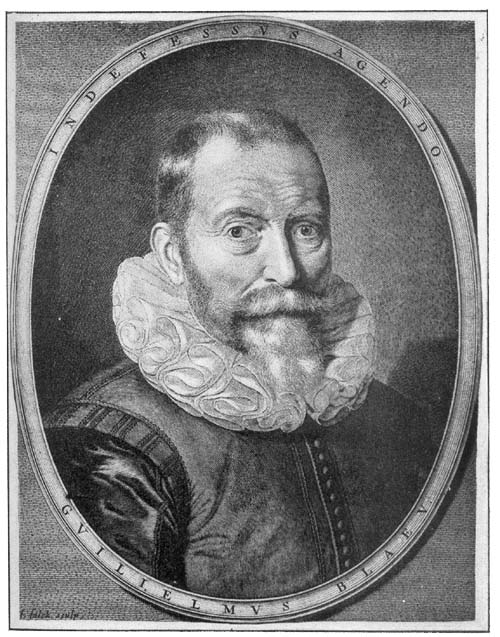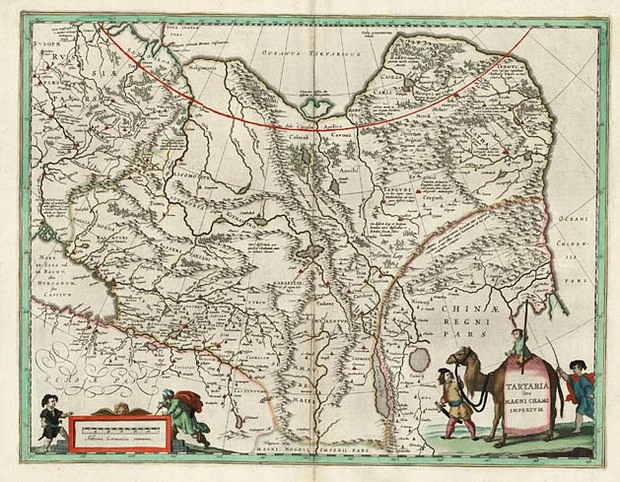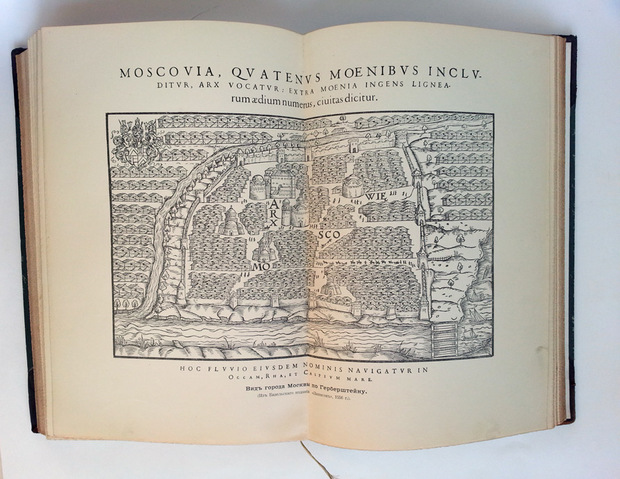Tartary’s map of Putin: what West travellers saw in alien countries?
President of Russia Vladimir Putin and Prime Minister Dmitry Medvedev have recently met with first president of Tatarstan Mintimer Shaimiev on the eve of his 80th anniversary. The head of the state presented Shaimiev a map of ancient Tartary by a Dutch cartographer of the 17th century Willem Blaeu. What is this map? How often did Tartary appeared on the maps of the European travellers? What was the ''Western'' view of these territories in the Middle Ages and the modern era? What exactly did Tartary include? A Kazan historian, our columnist Bulat Rakhimzyanov, who studies the history of the Tatars and Moscovia in the Middle Ages, answered to these and other questions of Realnoe Vremya.
Willem Blaeu, his map and the country of Tartary
First of all, I think, we need to answer the question: who was Willem Blaeu? Willem Janszoon Blaeu (1571-1638) was a Dutch cartographer and publisher. He was born in 1571 in Alkmaar (the city in the Netherlands). From 1594 to 1596, he studied astronomy and cartography. Around 1603, Blaeu settled in Amsterdam, where he began to make globes. Soon he also began to make maps, and in 1605 — map of the world. In 1629, he purchased the printed forms of Jodocus Hondius (a Flemish cartographer and publisher of atlases and maps). With their help, he published his own atlas, which included 60 maps, 37 of which were maps of Hondius. The name of Hondius on printed forms was changed to Blaeu (which is typical). As you can see, copyright was not honoured in the early modern period, in particular, he was not honoured personally by Willem Blaeu.
In 1633, Blaeu was appointed as the cartographer of the Dutch Republic, and the official cartographer of the Dutch East India company (which also clearly shows what kind of people usually got to the top of the social ladder). Blaeu created a large collection of maps and conducted extensive publishing activities. He published the works of scholars such as René Descartes, Pieter Corneliszoon Hooft and others. On October 21, 1638, Willem Blaeu was buried in Amsterdam.

As the media already wrote, ''the map (presented to Shaimiev by Putin — editor's note) illustrates the territory of North-East of Eurasia from the Volga River and the Caspian Sea in the West, to the ocean in the East. The whole territory of Siberia, Central Asia and the Far East is shown as under the authority of the great khan,'' reports TASS. According to the agency, on the back of the maps there are words in French that describe the borders of Tartary, the pedigree of the great khans, from Genghis, and also Malaya Tartary (the Crimea), Great or Asian Tartary, Desert Tartary, the Chagatai ulus, Turkestan, Chinese Empire, Old Tartary. It is noted that the cartographer based primarily on news from travellers and ancient texts, and reflects ''a low level of knowledge of people of Western Europe about Siberia.''
Now the question is, what was understood in the Middle Ages and earlier in the modern era under Tartary. According to Wikipedia, ''Tartary, a synonym Tatary (Lat. Tartaria) is the geographical term used in Western European literature and cartography in relation to vast areas from the Caspian Sea to the Pacific ocean and to the borders of China and India. The use of the term traced from the 13th century to the 19th century.'' The territory, formerly known as Tartary, in the modern European tradition is called Central Eurasia,'' or, as it is more usual to us, the Eastern Europe. Some of these territories represent arid plains, the main population were formerly engaged in cattle breeding.
The names Tartary and Tartars are derived from the ethnonym Tatars, which in ancient times was thought of as all Turkic and Mongol peoples. Europe learned about the Tatars during the invasion of the troops of Genghis Khan and his descendants. However, until the 19th century, information about them and about their countries remained extremely scarce and fragmentary. At the same time, in Western Europe, the term was transformed into Tartars due to contamination with Tartarus. Tartarus in the Middle ages meant as the deepest abyss of hell, and distant unknown regions of the Earth. The researchers note that reflecting the fear of the Mongol conquerors sinister images of Tartary and the Tartars replaced in the minds of Europeans Gog and Magog, who also lived in the North-East of the world. The Russian academic edition of 1846 depicts it more picturesquely: ''As Europeans understood it, the Tartars were the people, bringer of horrors and the day of the doom, and the form of the word became common, hinting at the origin of the enemies of Christianity from pagan Tartarus.''

Travels of foreigners to Moscovia, Tartary and to the East: how trustworthy are what was described and sketched?
Almost all European travellers shared the well-established mythological ideas of Tartary, going in search of the surrounded by mountain ranges country, Gog and Magog, different monsters, etc. Reality and fiction combined in their descriptions, which, however, stressed the diversity of the ''new world''.
Indeed, the Mongol invasion changed ideas about the ''monsters'' of Central Asia. Earlier, real peoples turned into monsters, now monsters became peoples. A vivid example was the testimony of Giovanni da Pian del Carpine (the first among Europeans who visited the Mongol Empire and wrote a description of his travels): in an attempt to tell the story of the Tartars, the author described the monsters that inhabited the conquered countries, as well as the real life of the Mongols. The list includes dumb, creatures without joints in the legs, cynocephali, with the face of a dog and a bull's hooves, people with one leg, one arm and other people. Carpine described stuffed animals, fire-throwing, mounts of magnets that magnetised arrows, crashes at sunrise, etc. It was obvious for the travellers that such monsters and miracles were impossible to see (however, it didn't call into question their existence), so they were constantly localised in the new areas of Tartary. We can say that Western ideas about Tartary were designed as opposed to European civilisation: the image of the Other, remote, mysterious and dangerous.
The same can be said about the Moscow state. The perception by the Europeans of Moscovia as an archaic country, comparable to the states of the Incas, Aztecs, Ottomans or Mughals, were reflected in iconography, which combined the images of Moscovia and Tartary. The map of Jenkinson (1562), the atlas of Ortelius (1570-1598) and The new map of Tartary (1626) by John Speed depict the Russian Tsar in a Tatar yurt, and a Tartar, in the clothes of an oprichnik (the term given to a member of the Oprichnina, an organization established by Tsar Ivan the Terrible to govern a division of Russia from 1565 to 1572 – editor's note).
An important aspect of the evolution of cartography of Tartary were the messages received from travellings to Russia (or Moscovia, as it was called by Western travellers), which began in the second half of the 15th century. The paramount importance in these texts belongs to Notes on Muscovite Affairs by Ambassador of the Holy Roman Empire Sigismund von Herberstein (1486-1566), who twice visited Muscovy in 1517 and 1526. His information about Tartary is few, partly mythologized. However, his other information is very valuable. I will give examples. Von Herberstein gives in his notes the material that helps to understand the relationship of Kazan and Kasimov's Khan Shakh-Ali with the Grand Prince of Moscow, as well as other information relating to Shah-Ali and the time of his stay at the Grand courtyard (1521-1530).

Ambrogio Contarini, sent with the Venetian Embassy to the Shah of Persia in 1473, on the way back visited the Grand Duchy of Moscow. His essay is called Questo e el Viazo de misier Ambrogio Contarini (The journey to Persia). Contarini left the position information of Kasimov Prince (Sultan) Daniyar and his relationship with Ivan III of Russia. He wrote that the Grand Duke each year travelled to different regions of his lands, and, in particular, he visited a Tartar man, whom he gave a salary with 500 horsemen on the border with the Tatars to protect his state from their attacks. Under this Tartar Contarini had in mind Kasimov Prince, Daniyar.
The value of the information of Western travellers about the Eastern territories
Summarizing, we can say that ''tales of foreigners'' of the 15-17th centuries are a kind of descriptions of travels and embassies to Russia and other countries of Eastern Europe and Asia, including to Tartary. In general, they provide important material not only for domestic but also for political history. When you work with them, you have to consider that in these works there are many exaggerations and errors. The names of cities, rivers and objects are often distorted beyond recognition. In some cases, however, this does not prevent using of foreigners messages (including maps) as an important historical source, in which it is essential to consider its specificity. However, in the context of cartographic information about Tartary, the map of Willem Blaeu seems uninformative and not very representative: it has only fragmentary information, not distorted by the perception of the author (authors).
Taking into account that under Tartary the Western scientists and travellers often understand the territory of the ulus of Jochi (Golden Horde), we can only guess what this Putin's gift means to the modern political history of Tatarstan. However, as sometimes it happens, it may mean nothing — ''sometimes there are just dreams'', as they say in the famous joke about Freud.